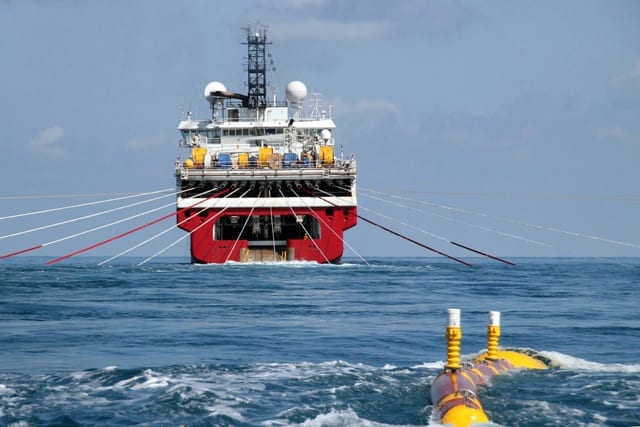ExxonMobil Guyana will complete its latest seismic data acquisition campaign in December, marking the end of a months-long effort to improve how oil is produced and managed from the country’s offshore reservoirs.
The company’s President, Alistair Routledge, said the work forms part of a wider plan to better understand how fluids move underground. “The campaign that we’re shooting this year will wrap up in December, and then we’ll be back in future years to continue this,” he stated during a press briefing on October 13.
ExxonMobil advances seismic imaging for greater oil recovery | OilNOW
Using advanced ocean bottom node technology, ExxonMobil has been capturing highly detailed 3D and 4D seismic data. These small battery-powered pods are placed on the seafloor while a vessel above sends out sound waves. “It gives us a higher resolution, 3D seismic imaging, which is especially important for those reservoirs that we’re developing,” Routledge explained.
He likened the process to medical imaging. “It’s like an MRI that you would get in the hospital. It allows you to see where the interface is between oil, water and gas in the reservoirs,” he said. That level of visibility helps engineers decide how much oil to produce from each well and when to switch between gas and water injection.
Routledge said the technology also allows for faster analysis. “This is a process of calculations that used to take well over a year. We’ve now brought that down into a matter of a week or two,” he noted. ExxonMobil uses high-performance computing and special algorithms developed at its Houston Spring campus to process the data almost in real time.
Exxon hires New Wave to conduct marine warranty survey for Whiptail project | OilNOW
He described this as a major shift in how reservoirs are managed. “In my 34–35-year career, this is the first time that I’m seeing the possibility to do that,” he said.
Routledge added that future seismic campaigns will build on this year’s work, helping ExxonMobil fine-tune its production strategies. “We can continue to optimize how we produce and inject into the reservoirs of the projects that have been sanctioned, so we maximize the recovery of the resource for the country,” he said.
ExxonMobil awarded Norwegian seismic company Shearwater GeoServices a contract to conduct a six-month 4D ocean bottom node survey offshore in the Stabroek Block. ExxonMobil has already contracted PGS for a previous 4D seismic survey in Guyana. The company is advancing plans for five more development projects in the country, aiming for a production capacity exceeding 1.7 million barrels per day by 2030.



